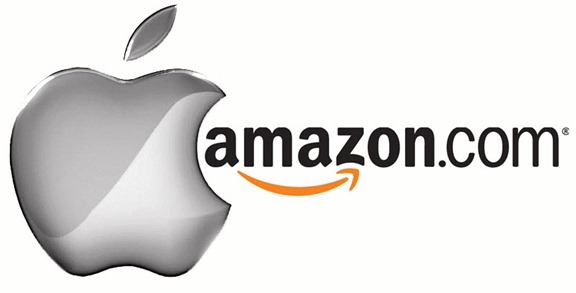
We talk about “sleeping giants” in local media a lot. Apple is often invoked for its moves in mobile payments for offline physical goods. Meanwhile Amazon’s innovation and installed base makes it more of an “anti-local” in shifting dollars from local offline commerce to eCommerce.
Google is another giant in local, but it already woke up around 2005 with the acquisition of keyhole and subsequent launch of Google Maps. It’s been on a tear ever since. That covers three of the four horsemen of tech. The fourth, Facebook, is likewise moving into local with a strong SMB marketing play.
Three of these four — Apple, Amazon, and Google — held major events in the past month, filled with product announcements. Google I/O was most recent, where local was understated but present in cool announcements around Nest’s API integrations for home automation (cue: local home service mashups).
Zeroing in on the other two, Apple and Amazon’s announcements have huge local implications. I haven’t heard either of these discussed, so my monthly column takes a look at each one. For Apple, it’s unlocking call monetization on the desktop; for Amazon is turning the entire physical world into a showroom.
The column excerpt is below and you can read the entire thing here. These will be key topics in our ongoing analysis and especially at our upcoming conference in New Orleans in September: SMB Digital Marketing. Hope to see you there.
Local’s Sleeping Giants; A Tale of Two Keynotes
We’re at the height of keynote season. Three of the four horsemen of tech held events in the past month, culminating in launch-filled Keynotes. Apple, Amazon and Google, in that order, carted out their wares.
Local was understated at each, but below the surface were huge implications. This further solidified Apple and Amazon as sleeping giants in local. Google is already there, having been on a rampage since 2005.
Apple’s local announcement at WWDC was an OSX feature that lets you launch an iPhone call from your desktop whenever a phone number appears in the browser. This essentially hyperlinks desktop phone numbers the same way smartphones do.
This could have huge ramifications for the pay-per-call market already jumpstarted by the iPhone and mobile search. The physical separation of PC and phone has long been a gating factor in desktop pay-per-call ad models.
This creates new locally relevant ad inventory throughout company websites, social presence and local search. It’s reminiscent of what Skype did in 2009, but an easier handoff from the click to the call.
As for Amazon, the Fire Phone is the big story, but few industry watchers have gotten it right. Despite face tracking and other bells, it’s not about the gadgetry or hardware revenue. It’s about growing Amazon’s core revenue stream: eCommerce.
On that measure, the Fire furthers Amazon’s platform play. It was previously beholden to other operating systems like iOS, where increasing levels of commerce are happening. Hardware puts Amazon more directly in the hands of users, literally.
Hence the “Firefly” button on the Fire to scan any item and order it on Amazon. Utilizing the technology it acquired by Flow, this will turn the entire physical world into an amazon catalog. Forget showrooming. This is showrooming on steroids.
Read the rest.

This Post Has 0 Comments